Using casters can reduce the workforce and increase work efficiency. the right caster should be chosen by the manner of application, condition, and request (for example facility, laborsaving, and durability).
The factors must be considered as follows:
1. The Caters Load Capacity
Calculated as follows:

T= each caster load
E= the weight of the vehicle
Z= the weight of a moving object
M= efficient load casters quantity(the position and different heavy distribution must be considered).
Here is a caster load calculator, you can directly enter the value to calculate the caster with the load capacity you need.
If you don’t know how to calculate, you can contact us directly for a free consultation.
Efficient load caster quantity follows:


When choosing, it should be calculated according to the bearing capacity of the casters at the maximum support point.
The caster’s load at the position of maximum should be considered when choosing load capacity. concrete load position and maximum position (P2) as follows:

2. Caster Wheel Mounting Bracket Thickness and Surface Treatment
Bracket Thickness
First, consider the weight of the casters. Such as supermarkets, schools, hospitals, office buildings, hotels, and other places, because the floor is good, smooth and the goods carried are light, it is suitable to choose the plated wheel frame stamped and formed by thin steel plate (2-4mm), the wheel frame is light and flexible to operate, Quiet and beautiful, this electroplating wheel frame is divided into double-row balls and single-row balls according to the arrangement of the balls, if you often move or carry double-row balls, use double-row balls.
In places such as factories and warehouses, where goods are frequently transported and the load is heavy (each caster can carry 280-420kg), it is suitable to use thick steel plates (5-6 mm) stamped, hot-forged, and welded with double-row ball wheels shelf.
If it is used to carry heavy objects such as textile factories, automobile factories, machinery factories, etc., due to the heavy load and the long walking distance in the factory (each caster is loaded at 350-1200kg), thick steel plates (8-12mm) should be selected ) The wheel frame welded after cutting, the movable wheel frame uses flat ball bearings and ball bearings on the bottom plate, so that the casters can bear heavy loads, rotate flexibly, and resist impacts and other functions.

Surface Treatment
In the market, the most common bracket colors are divided into two types: silver and black. The silver color is electroplated, and a layer of zinc or chrome is plated to make the color of the bracket silver. The black ones are generally made of electrophoresis technology to make their brackets black. Another kind of high-end caster adopts powder spraying technology, and the color can be customized according to the needs of customers. Of course, the price is relatively high. Whether it is electroplating technology, electrophoresis technology, or powder spraying technology, the purpose is to prevent the surface of the bracket from rusting.
3. Caster Wheel Sizes
The diameter of a caster wheel has a significant impact on its use. A larger caster diameter offers several advantages:
- Improved Mobility: Larger caster wheels roll more easily over obstacles, uneven surfaces, and debris. They provide better maneuverability and require less effort to push or steer, making them suitable for heavy loads.
- Weight Capacity: Larger caster wheels typically have a higher weight capacity, allowing them to support heavier loads without compromising stability.
- Noise and Vibration Reduction: Bigger caster wheels can absorb shocks and vibrations more effectively, resulting in a smoother and quieter ride, which is essential in applications like medical equipment and industrial carts.
- Durability: Larger caster wheels tend to have a longer lifespan because they distribute weight more evenly and experience less wear and tear during use.
- Stability: The larger the caster’s diameter, the more stable the equipment becomes, reducing the risk of tipping over or losing balance.
The bigger the wheel diameter is, the more laboursaving it becomes, and can protect the floor surface perfectly. The bigger wheels run much more slowly, not easily getting heated and distorted, and are more durable than the small ones.it is better to choose the bigger diameter wheel when the fitting height is enough.
4. Movement Speed of Casters
The request for caster speed: at the normal temperature and on the smooth floor the speed should be lower than 4 km/h of the walk and there is a static interval during the work time.
If you need to use casters with higher movement speeds, you will need to use specific casters, such as pneumatic casters.
5. Caster Usage Environment and Floor Types
a. Consider the floor types: casters are generally used on flat ground. If the ground is uneven, hard objects or iron filings remain, in this case, harder casters, such as iron wheels and nylon wheels, should be used.
b. Consider the on-site environment: polyurethane casters are generally used for the external environment or ground with acid and alkali. In an environment with a temperature of 60° or above, high temperature-resistant casters or iron wheels are generally used. In the low-temperature environment of minus 30°, it is more suitable to use rubber wheels.
c. Consider the surrounding environment: For low-noise environments, casters made of soft, elastic polyurethane, artificial rubber, and other materials should be used, such as offices, hospitals, floors, quiet workshops, and dense transportation passages in shopping malls.
6. Choose the Right Caster Mounting Types
The installation methods of casters can vary based on the type of furniture or equipment you are attaching them to and the specific caster design. Here are some common installation methods:

Plate Mounting
This is the most common method for installing casters. The caster has a flat plate with mounting holes, and you attach it directly to the bottom of the furniture or equipment using screws or bolts. Make sure to align the holes correctly and securely fasten the casters to ensure stability.
Stem Mounting
Some casters have stems instead of plates. These stems can be inserted into pre-drilled holes in the furniture or equipment. You may need to use a socket or bracket to secure the caster in place.
Threaded Stem Mounting
Similar to stem mounting, the stem is threaded like a screw. This type of caster can be screwed directly into a threaded hole in the furniture or equipment.
Grip Neck Stem Mounting
This method involves inserting the caster’s grip neck stem into a socket or bracket with matching dimensions. The stem grips into the socket to hold the caster in place.
Expanding Adapter Mounting
Expanding adapters are used for casters with grip neck stems. They fit into round tubing or hollow legs of furniture or equipment, expanding to grip and hold the caster securely.
Friction Ring Stem Mounting
Caster stems with friction rings have a stem that is inserted into a socket or bracket. A friction ring near the top of the stem allows for a snug fit and secure installation.
Top Plate Swivel Mounting
For swivel casters, a top plate with a ball-bearing race is used for mounting. This plate allows the caster to rotate freely and change direction easily.
7. Choose the Right Caster Material
Caster wheels are available in various materials, each with its unique set of characteristics suited for different applications. Some common material types and their characteristics include:
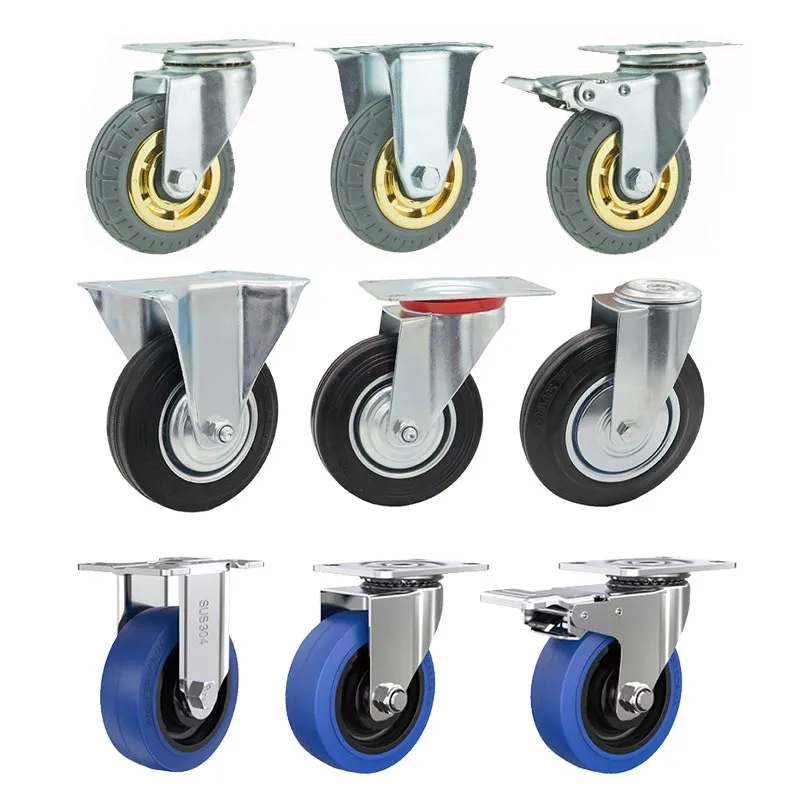
1. Rubber Wheel
Rubber caster wheels are known for their excellent shock absorption and quiet operation. They provide good traction on various surfaces, making them suitable for indoor use and delicate floorings. However, they may wear out faster than other materials when used outdoors or on rough surfaces.

2. Polyurethane Wheel
Polyurethane caster wheels offer superior load-bearing capacity and are resistant to chemicals and oils. They are suitable for both indoor and outdoor use, providing a balance between durability and floor protection.
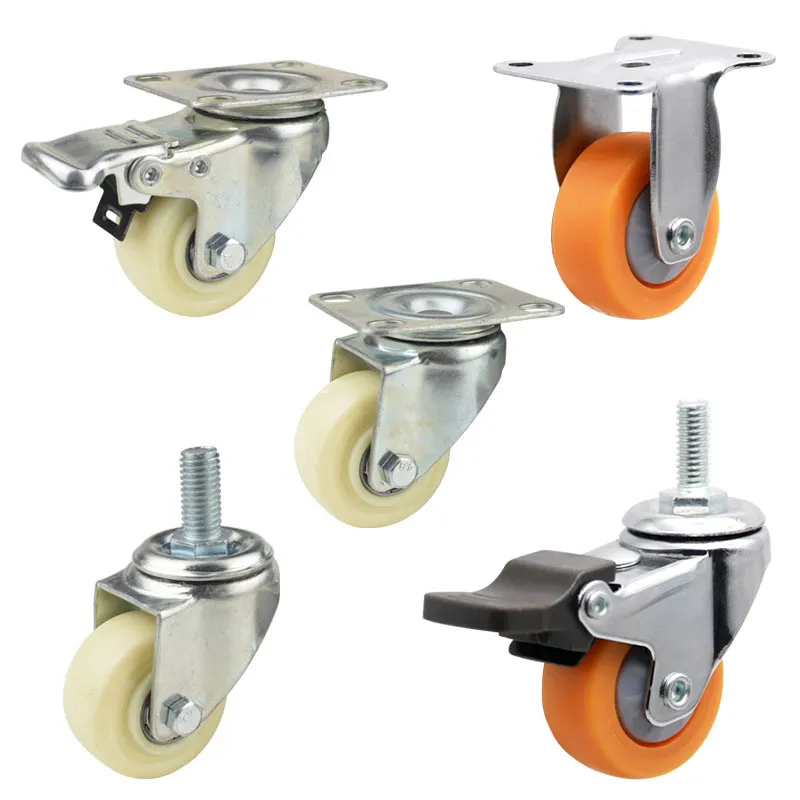
3. Nylon Wheel
Nylon caster wheels are lightweight, strong, and highly resistant to abrasion. They are often used in industrial settings, handling heavy loads, and on rough surfaces. However, they may cause more damage to delicate floors compared to rubber or polyurethane.
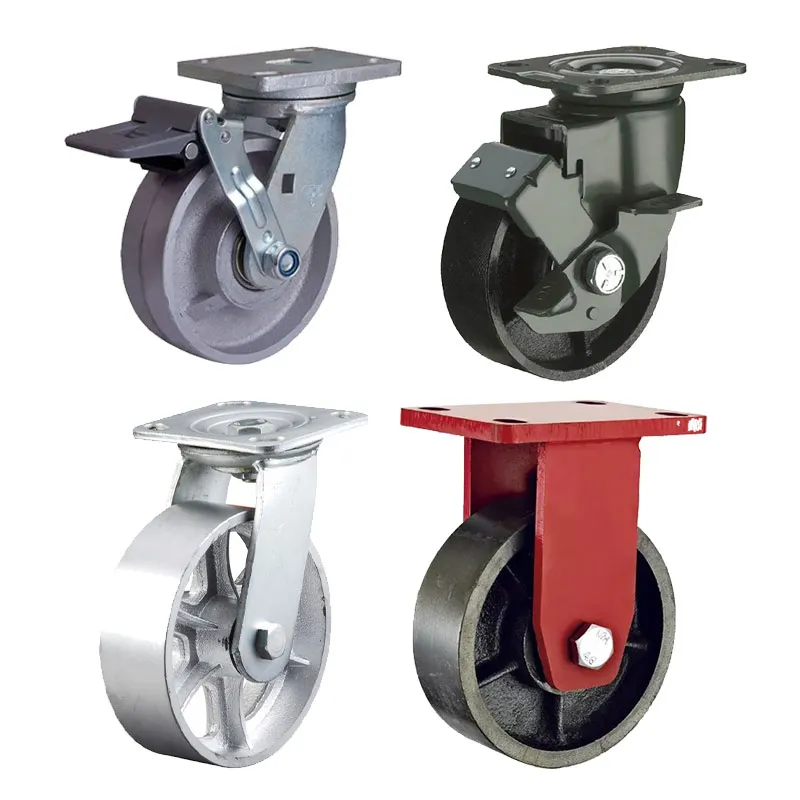
4. Cast Iron Wheel
Cast iron caster wheels are incredibly durable and can handle very heavy loads. They are commonly used in industrial applications and outdoor environments but can be noisy and cause damage to delicate floors.
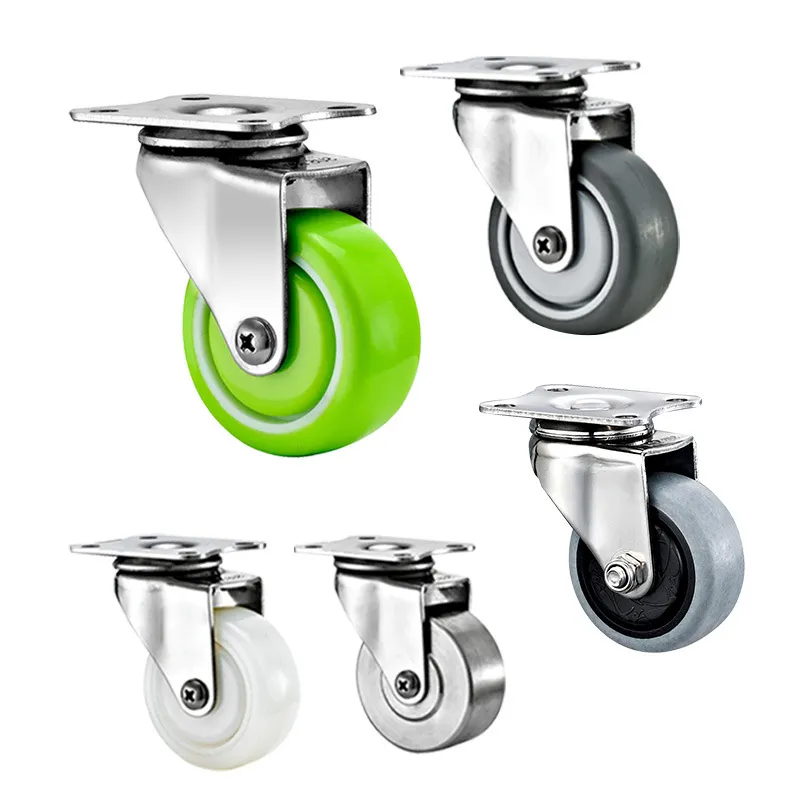
5. Stainless Steel Wheel
Stainless steel caster wheels offer excellent corrosion resistance, making them ideal for use in food processing, medical, and marine industries. They are strong and suitable for both indoor and outdoor applications.

6. Thermoplastic Wheel
Thermoplastic caster wheels are lightweight, non-marking, and resistant to chemicals. They are commonly used in healthcare settings and industries where hygiene is essential.
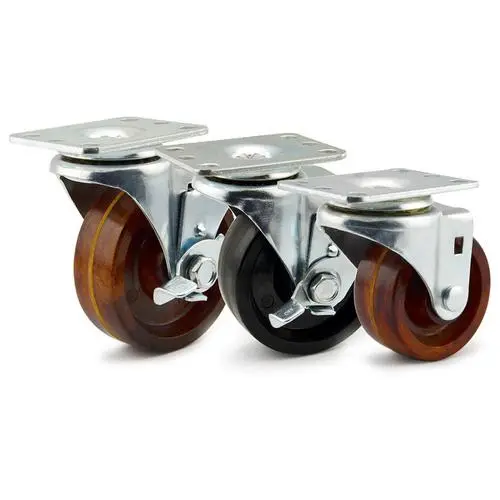
7. Phenolic Wheel
Phenolic caster wheels are cost-effective and provide good load capacity. They work well in industrial environments but may not be suitable for outdoor or wet conditions.
When choosing the material of the casters, it is necessary to ensure that the material of the casters matches the environment in use, which can prolong the service life of the wheels.
8. Consider Caster Bearings
Casters use various types of bearings to facilitate smooth movement and reduce friction between the wheel and the mounting plate. Here are the characteristics of some common types of caster bearings:
Single Ball Bearing:
A single ball bearing consists of a single ball enclosed in a raceway. This type of bearing allows for basic rotational movement, providing a relatively smooth swivel for light to medium-duty applications. However, it may not handle heavy loads or rough surfaces as effectively as other bearing types.

Double Ball Bearing:
Double ball bearings have two sets of balls separated by a spacer within the raceway. This design enhances the load-bearing capacity and improves the overall performance of the caster. Double ball bearings provide smoother swiveling and are suitable for heavier loads and more demanding environments.

Roller Bearing:
Roller bearings utilize cylindrical rollers instead of balls, distributed along the raceway. These bearings offer increased load capacity and are well-suited for handling heavy loads and rough surfaces. They provide more stable swiveling and are commonly used in industrial and commercial applications.
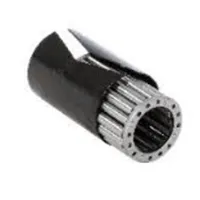
Tapered Bearings (Terling Bearings):
Tapered bearings, also known as terling bearings, use tapered rollers to handle both radial and axial loads. These bearings offer excellent load distribution, making them ideal for extreme weight-bearing situations and rugged environments. They are commonly found in heavy-duty industrial applications and equipment.
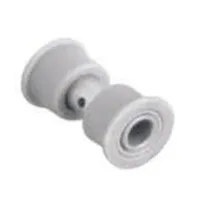
The choice of bearing type for casters depends on the specific application, load capacity requirements, and the conditions in which the casters will be used. Roller bearings and tapered bearings provide superior load-bearing capabilities, while double ball bearings strike a balance between load capacity and cost-effectiveness. Single ball bearings are suitable for lighter loads and less demanding scenarios. Always ensure that the chosen caster bearing type matches the intended application to ensure optimal performance and longevity.
9. Caster Brake Types
Full brake: Full brake is a common caster braking method, which means that when the caster is in motion, the wheel cannot rotate and the swivel plate cannot rotate.
Wheel brake: A single brake is installed on the top, which means that when the caster is moving, the wheel stops moving after stepping on the brake, but the bracket can still rotate.
Swivel brake: After stepping on the brake, the universal wheel becomes a directional wheel.
Side brake: The side brake of a caster is a mechanical component or mechanism that is used to immobilize or lock the wheel of a caster (a swiveling wheel often found on the bottom of furniture, carts, and other objects). When engaged, the side brake prevents the caster wheel from rotating and keeps the object stationary. This braking method is beautiful and safe and can be easily operated with your feet.
Summarize
Through this article, I believe you already have a basic understanding of choosing casters. By calculating the load requirements of casters and choosing the appropriate caster size, installation method, braking method, and wheel surface material, we can get the casters that best suit our needs.
If you want to know more information, please contact us directly, we can provide you with casters for medical, industrial, furniture, and other multi-purpose scenes.


